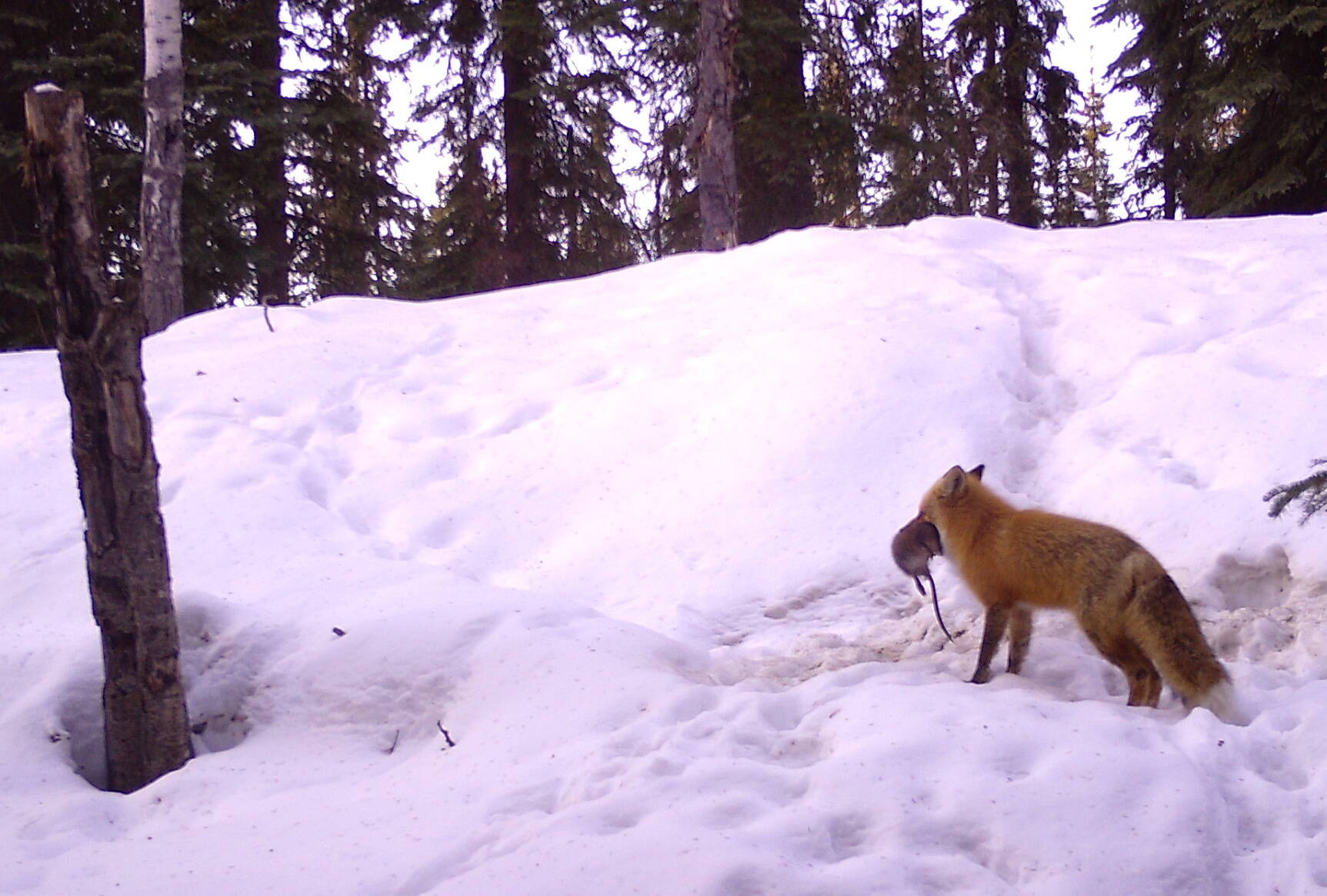While we were sleeping, they were out there. Two red foxes, a male and female, pawing into spring snow on a hillside.
The foxes had found the entrance to a tunnel dug many years ago. It might have been the den in which one of them was born.
The fox den — in November 2023 quiet and unoccupied — is located within a dark patch of forest close to Alaska’s second-largest city. It is a spot far from artificial lights but bathed daily by the sound waves of train horns and aircraft engines.
Sometime during spring 2023, within that den, the vixen fox gave birth to three gray kits. They were fuzzy, cute as puppies.
The kits — yet another generation of foxes born in that same spot — popped their tiny heads out one spring evening when snow still covered the ground. They tumbled out to meet their mother, who sunned herself on top of the bump. The young foxes got a taste of fresh air and the scents of spruce and dirt moistened by melting snow.
At times, the kits were alone in the den. Both adults had disappeared, later to return carrying red squirrels or muskrats in their mouths.
As the kits grew and a few weeks passed, the male fox disappeared from the scene. Maybe the family didn’t need him anymore and he just took off. Maybe something else.
The mother fox remained at the den, growing more frazzled as melted snow wet her fur. She moved late at night in the diminishing darkness to find food. In the heat of the day she napped on the rotting snowpack until her kits emerged to pounce on her like kittens.
Sometimes, returning to the den, the mother nosed the ground, detecting that other animals had been near. A porcupine had pondered the hole for a few minutes before shuffling off. A lynx stopped by at night to sniff the den entrance.
Those were one-time visitors, but one creature returned many times. Twice as large as the adult fox, a coyote detected all the signs of life around the den: The hot breaths coming from within, the dirty pathway curling over the hill pocked with the fox’s footpads, the specks of a grouse torn apart and fed to three little ones.
To me, a guy checking the photos within his game camera that was mounted on a skinny spruce nearby, the coyote was the prize. Though I know coyotes exist here in middle Alaska, I have eyeballed them just a few times. A trapper once told me coyotes are harder to catch than wolves.
Why this tan/gray canine kept returning to the fox den was a mystery.
Though I suspected the coyote wanted to grab a kit, run off with it and eat it, a check of the scientific literature showed few references of coyotes eating young red foxes. Scientists have studied red foxes often — maybe because they live near us and dens like this one are easy to find — but most of the paper authors agreed that red foxes and coyotes most often tolerate each other’s existence.
The hidden camera captured a brief encounter between one of the foxes and the coyote. The fox appears to be watching the coyote as it sniffs at the den entrance. In the next motion-triggered frame, the coyote is running with its teeth exposed. Was it chasing the fox?
I don’t know how the drama ended, or if it even was a drama. The batteries died on my camera right after that shot and the secret world continued unseen.
• Since the late 1970s, the University of Alaska Fairbanks’ Geophysical Institute has provided this column free in cooperation with the UAF research community. Ned Rozell is a science writer for the Geophysical Institute.

